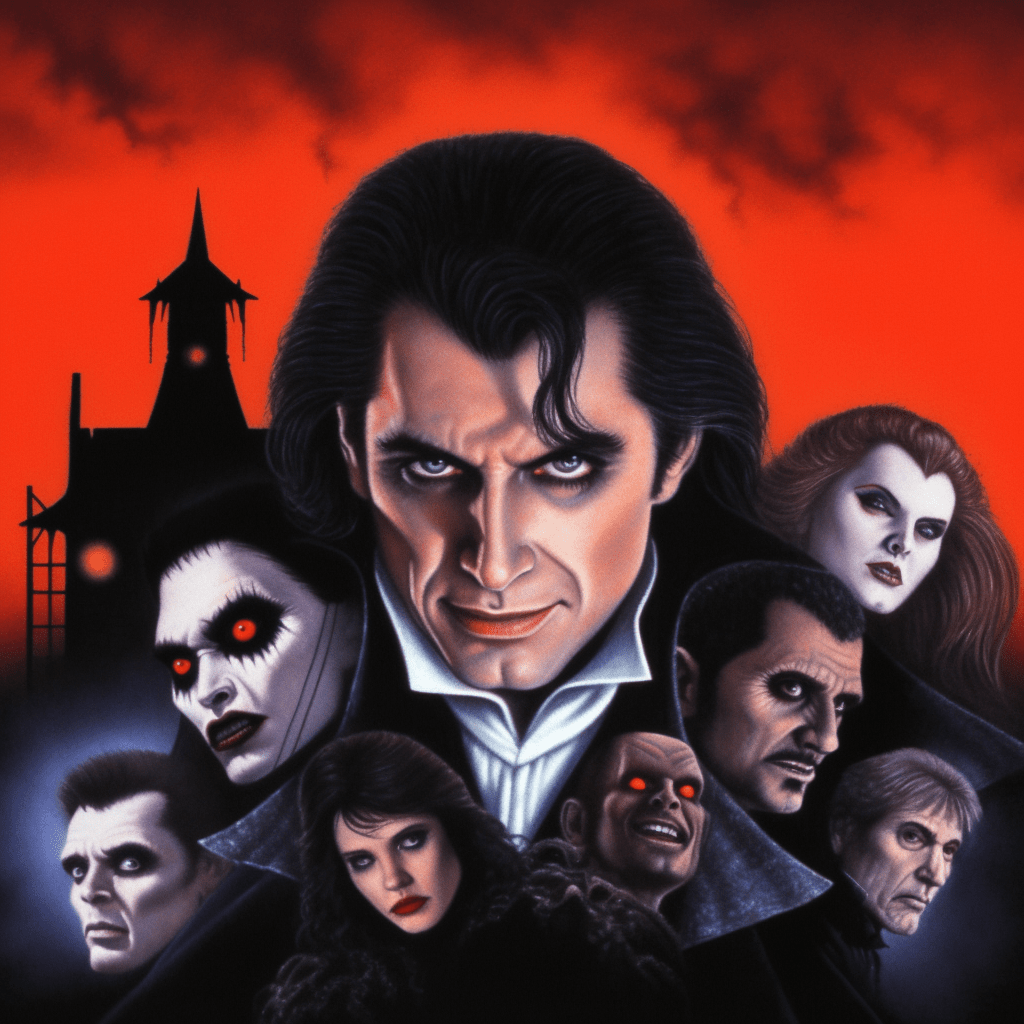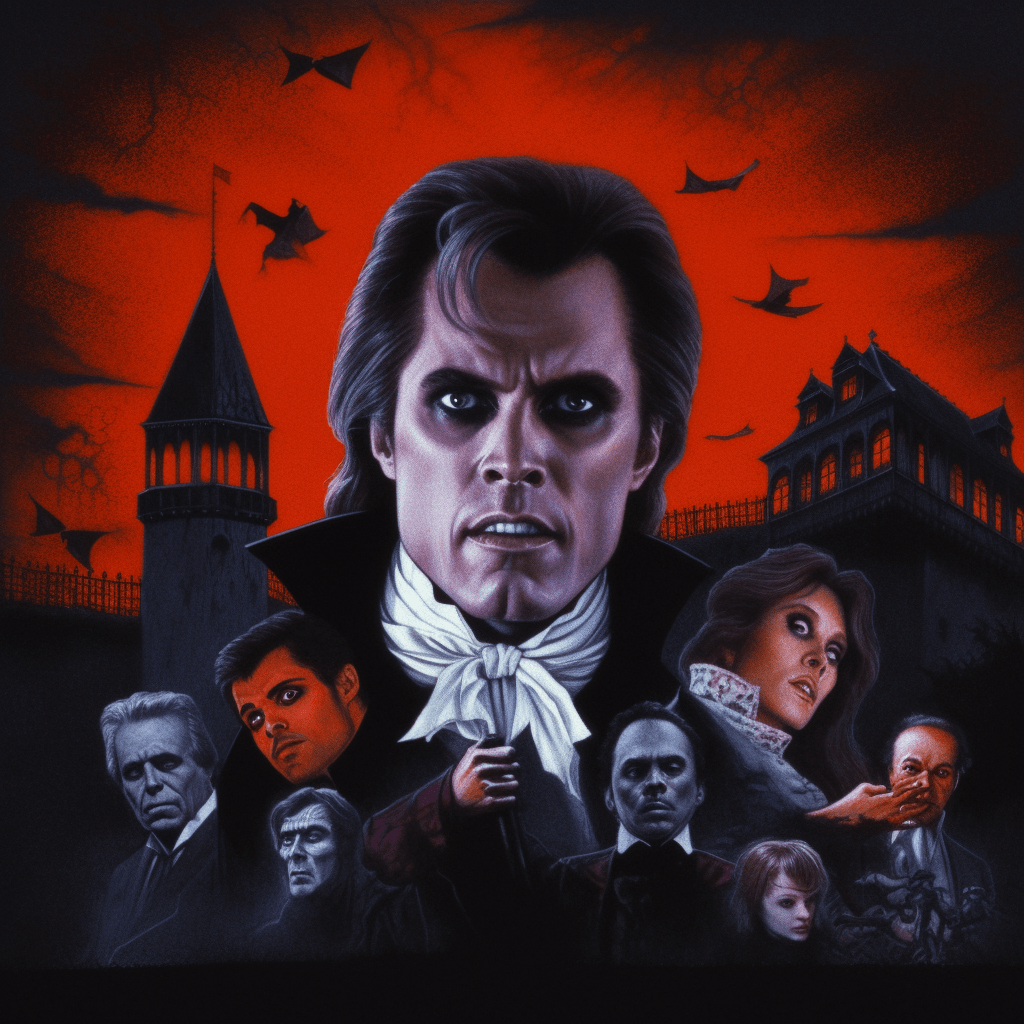Vampire Movies from the 1980s
It is no secret that the 1980s saw a surge in vampire-themed films, with some of the most iconic titles of the genre being released during this decade. One of these timeless classics is The Lost Boys, starring Kiefer Sutherland and Corey Haim. It is widely considered to be one of the best vampire movies of the decade. Another beloved movie of the time is Near Dark. It blended horror and western genres to create a unique vampire story that has since become a cult classic. Fright Night, starring Chris Sarandon and Roddy McDowall, has been a fan favorite to this day. It blends horror and comedy.
Notable Titles
This decade saw a surge in vampire-themed films, with some of the most iconic titles of the genre being released. The Lost Boys, Fright Night, and Near Dark are among the most recognizable vampire films of the 80s, and each was a trailblazer in the horror genre, utilizing groundbreaking effects to bring vampires to life on the big screen.
With their unique, dark humor, these cult classics have become popular among horror fans of all ages, and they feature some of the most iconic characters in horror movie history, including the vampire-hunting Peter Vincent (Fright Night) and the vampire David (The Lost Boys).
Popularity Today
When it comes to 80s vampire movies, there is a certain allure that has captured the imaginations of audiences both young and old. From streaming platforms increasing their availability to new remakes and reboots being released, it is no surprise that the genre has seen a resurgence in popularity in recent years. This is due in part to the nostalgia factor of the genre, as many viewers appreciate the campy aesthetic and special effects of the era.
The 80s vampire movie genre has also had a lasting impact on pop culture, with characters such as the iconic vampire Count Dracula becoming household names. In addition, references and homages to the genre can be seen in films, TV shows, and other media. Furthermore, the 80s vampire movie genre has a wide appeal, from horror fans who appreciate the classic monsters to those who enjoy the campy, tongue-in-cheek humor.
Remakes
Remakes of classic vampire movies have been met with widespread success as viewers are drawn to the modernized versions of classic stories and characters. The popularity of these remakes has resulted in a resurgence in vampire movie production and the cultural impact of these remakes has been significant. Many viewers have been drawn to the modernized versions of classic stories, appreciating the nostalgia and campy aesthetic of the era. With remakes and reboots of 80s vampire films becoming increasingly popular, the genre has seen success.Box Office Success
In the 1980s, vampire movies such as The Lost Boys, Fright Night, and The Hunger saw box office success and critical acclaim, earning award nominations and establishing themselves as cult classics. These films had a lasting cultural impact, and many of their iconic elements are still referenced today. The success of these vampire movies ushered in a new wave of vampire films in the 1990s and beyond, with many of their themes and characters still seen in modern films. The combination of commercial success and cultural significance have made these 80s vampire movies enduringly popular.
Classics
When it comes to vampire films, few are as iconic as The Lost Boys, released in the 1980s. This cult classic spawned a sequel, quickly becoming one of the most popular vampire films of the decade. Not only was it commercially successful, but it also had a major influence on the vampire genre, blending horror, comedy, and romance in a unique way.
The film’s legacy has endured to this day, with its memorable characters, quotable lines, and iconic soundtrack.
Depiction Evolution
During this decade, vampires began to move away from the classic horror genre and shifted towards a more romantic depiction. This shift was reflected in the use of gothic aesthetics in vampire films – eerie castles, foggy graveyards, and sinister settings.
Furthermore, vampires were humanized, with many films featuring sympathetic protagonists who were more human than monster. The popular novels of Anne Rice, such as Interview with the Vampire, had a major influence on vampire films of the 1980s, inspiring a more romantic and sophisticated take on the genre.
Cultural Impact
This blog post aims to explore the influence of vampire movies from the 1980s on popular culture. During this decade, vampire films shifted from classic horror to a more romantic interpretation, with many films featuring sympathetic protagonists. The use of gothic aesthetics in vampire films, such as eerie castles and foggy graveyards, gave the genre a more sophisticated feel.
Anne Rice’s popular novels, such as Interview with the Vampire, had a major influence on the genre, inspiring a more humanized and romanticized take on vampires. This transformation has led to vampires becoming a more relatable and complex creature in popular culture.
The 1980s vampire movies have had a major impact on popular culture and continue to be celebrated to this day. Iconic characters and a long-lasting legacy all stem from this era, making it an important period in the history of vampires in popular culture.
